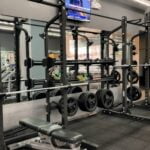Sandbag fitness exercises have become increasingly popular in recent years, offering a versatile and challenging workout option for fitness enthusiasts of all levels. These exercises involve using a sandbag as a weight resistance tool to improve strength, endurance, and overall physical conditioning. Whether you are a beginner looking to add some variety to your routine or an experienced athlete seeking new challenges, sandbag training can be a valuable addition to your fitness regimen.
One of the key advantages of sandbag fitness exercises is their ability to engage multiple muscle groups simultaneously, promoting functional strength and stability. By incorporating sandbag workouts into your training routine, you can enhance your overall athletic performance and improve coordination and balance. Additionally, the varied grip positions and unstable nature of the sandbag require greater core activation, leading to a more comprehensive and effective workout.
In this article, we will explore the benefits of incorporating sandbag training into your workout routine, how to choose the right sandbag for your fitness level, top exercises for building strength and endurance, tips for proper form and technique, advanced variations for experienced athletes, as well as practical ways to integrate sandbag workouts into your fitness program. Whether you prefer working out at home or in the gym, sandbag fitness exercises offer a versatile option for achieving your fitness goals.
Benefits of Incorporating Sandbag Training in Your Workout Routine
Sandbag fitness exercises provide a unique and versatile way to enhance your workout routine, offering numerous benefits for individuals looking to improve their strength, endurance, and overall fitness levels. One of the key advantages of incorporating sandbag training into your workouts is the functional strength it helps develop.
Unlike traditional weights, sandbags require stabilization and balance throughout different movements, engaging a wide range of muscles in the process. This leads to improved core strength and stability, making everyday tasks easier to perform.
In addition to functional strength, sandbag fitness exercises also promote full-body workouts that target multiple muscle groups simultaneously. This efficient form of training not only saves time but also increases calorie burn due to the high-intensity nature of sandbag exercises. Whether you are performing squats, lunges, presses, or carries with a sandbag, you are engaging various muscles in your body, leading to a more comprehensive workout session.
Furthermore, sandbag training can be easily scaled to accommodate individuals of different fitness levels. Whether you are a beginner or an experienced athlete, there are endless variations of sandbag exercises that can be adjusted in terms of weight and intensity.
This adaptability makes sandbags a suitable tool for anyone looking to challenge themselves while still ensuring proper form and technique in each movement. By choosing the right sandbag weight for your fitness level, you can gradually progress and see improvements in your strength and endurance over time.
| Benefits of Sandbag Training | Key Points |
|---|---|
| Functional Strength | Engages multiple muscles and promotes core stability |
| Full-Body Workouts | Efficiently targets various muscle groups for increased calorie burn |
| Scalable for All Fitness Levels | Can be adjusted in weight and intensity for beginners to advanced athletes |
Choosing the Right Sandbag for Your Fitness Level
Types of Sandbags
When it comes to choosing the right sandbag for your fitness level, it’s important to consider the different types available in the market. There are adjustable sandbags that allow you to customize the weight by adding or removing sand, making them a versatile option for individuals of all levels.
Fixed-weight sandbags, on the other hand, come in various weights ranging from light to heavy, providing a more straightforward option for those who prefer a specific weight for their exercises.
Weight Considerations
The weight of the sandbag is an essential factor to take into account when selecting one for your fitness routine. Beginners should start with a lighter sandbag to avoid potential injury and gradually increase the weight as they build strength and endurance. Intermediate and advanced individuals can opt for heavier sandbags to continue challenging themselves and progress in their fitness journey effectively.
Fitness Goals and Exercises
Your fitness goals and the type of exercises you plan to do with the sandbag should also influence your decision when choosing the right one. If you’re focusing on strength training, a heavier sandbag may be more suitable, whereas if you’re looking to improve endurance and agility, a lighter sandbag could be more appropriate.
Consider your specific workout routine and objectives when selecting a sandbag that aligns with your fitness goals and preferences. By matching the right type of sandbag with your current fitness level and workout objectives, you can optimize your training sessions and maximize results in terms of strength, endurance, and overall performance.
Top 5 Sandbag Exercises for Strength and Endurance
Sandbag training has gained popularity in the fitness world due to its effectiveness in building strength and improving endurance. Incorporating sandbag exercises in your workout routine can provide a dynamic challenge that engages multiple muscle groups simultaneously. Whether you are a beginner or an experienced athlete, there are various sandbag exercises that can help you achieve your fitness goals.
Here are the top 5 sandbag exercises for strength and endurance:
- Sandbag Squats: Stand with feet shoulder-width apart, holding the sandbag in front of your chest. Lower yourself into a squat position by bending at the hips and knees. Keep your chest up and back straight as you lower down. Push through your heels to return to the starting position.
- Sandbag Lunges: Hold the sandbag on your shoulders with both hands, step one foot forward and lower yourself into a lunge position until both knees are at 90-degree angles. Push through the front heel to return to standing position and repeat on the other leg.
- Sandbag Rows: Stand with feet hip-width apart, holding the sandbag with both hands in front of your thighs. Hinge at the hips while keeping your back flat, then pull the sandbag towards your abdomen by bending your elbows. Lower back down with control and repeat for desired reps.
- Sandbag Press: Begin by cleaning the sandbag to shoulder height using proper form (cleaning is bringing the bag from floor to shoulder). Press the bag overhead, extending arms fully without locking elbows. Lower back down under control and repeat.
- Sandbag Deadlifts: With feet hip-width apart, hinge at hips while maintaining a flat back to grab onto each side of the sandbag handle or neutral grip handles if available. Engage core muscles as you lift the sandbag towards standing position, squeezing glutes at top of movement before lowering back down.
By incorporating these top 5 sandbags exercises into your workout routine, you can improve strength, power, stability and endurance while also challenging different muscle groups in unique ways compared to traditional weight training methods. Don’t forget to focus on proper form and technique to maximize results and minimize injury risk when performing these dynamic movements.
Sandbag Training for Full-Body Workouts
Sandbag training offers a unique way to engage multiple muscle groups simultaneously, making it an excellent choice for full-body workouts. Incorporating sandbag fitness exercises into your routine can help you build strength, improve endurance, and enhance overall body stability.
The shifting weight of the sandbag requires greater stabilization from your core muscles, leading to a more challenging workout that targets both major and stabilizing muscle groups. Here are some effective sandbag exercises to add variety and intensity to your full-body workouts:
- Sandbag Squats: Hold the sandbag in front of your chest or on your shoulders as you perform squats. This exercise targets the quadriceps, hamstrings, glutes, and core muscles.
- Sandbag Lunges: Step forward or backward while holding the sandbag in various positions such as bear hug, shoulder carry, or overhead position. This exercise engages the lower body muscles while challenging stability.
- Sandbag Deadlifts: Stand with feet hip-width apart and hinge at the hips to pick up the sandbag from the ground, then lift it to a standing position. Deadlifts work the hamstrings, glutes, lower back, and grip strength.
Incorporating these sandbag exercises into your full-body workouts can help you improve functional strength, balance, and coordination. The dynamic nature of sandbags provides an additional challenge compared to traditional weight training equipment.
By adding sandbag training to your fitness regimen, you can enhance your overall physical abilities and make significant progress towards reaching your health and wellness goals. Whether you are a beginner or a seasoned athlete, sandbag fitness exercises offer a versatile and effective way to elevate your workout routine.
Tips for Proper Form and Technique in Sandbag Exercises
Sandbag fitness exercises are a fantastic way to challenge your body and improve strength, endurance, and overall fitness. However, just like any other form of exercise, it is crucial to maintain proper form and technique to prevent injury and maximize the effectiveness of your workout. Here are some essential tips for ensuring you get the most out of your sandbag training sessions.
First and foremost, when performing sandbag exercises, focus on maintaining a neutral spine throughout the movement. This means keeping your back straight and avoiding excessive rounding or arching. Engage your core muscles to provide stability and support for your spine as you lift, carry, or squat with the sandbag.
Another important tip is to start with a lighter sandbag before progressing to heavier weights. Proper form should always take precedence over lifting heavy loads. Gradually increase the weight of the sandbag as you become more comfortable with the movements and can execute them correctly.
It’s also crucial to pay attention to grip strength when using a sandbag. The shifting nature of the sand inside the bag can make it challenging to hold onto, so focus on strengthening your grip through specific exercises or variations in your sandbag training routine. This will not only improve your performance but also reduce the risk of the bag slipping or causing an injury during exercise.
| Benefit | Description |
|---|---|
| Improved Strength | Sandbags engage stabilizing muscles for increased overall strength. |
| Enhanced Endurance | The varied movements with sandbags boost cardiovascular endurance. |
| Functional Fitness | Sandbags simulate real-life movements for practical strength gains. |
Advanced Sandbag Fitness Exercises for Experienced Athletes
Explosive Power Movements
For experienced athletes looking to take their sandbag fitness exercises to the next level, incorporating explosive power movements can provide a challenging and effective workout. Exercises like sandbag cleans, snatches, and throws can help improve overall power, speed, and strength. These dynamic movements require coordination, stability, and proper form to execute correctly. By adding explosive power movements to your sandbag training routine, you can enhance athletic performance and push your limits.
Unilateral Movements
Another advanced training technique for experienced athletes is incorporating unilateral movements with the sandbag. Unilateral exercises focus on working one side of the body at a time, helping to improve balance, stability, and core strength.
Lunges with a sandbag held overhead, single-arm presses, or single-leg deadlifts are great examples of unilateral movements using a sandbag. These exercises challenge different muscle groups than traditional bilateral movements and can help eliminate strength imbalances between the left and right sides of the body.
Integration of Complex Movements
To truly test your skills and conditioning, integrating complex movements into your sandbag fitness routine is key. Complex movements combine multiple exercises into one fluid movement pattern, challenging coordination, flexibility, and strength simultaneously.
Exercises like squat presses, Turkish get-ups with a sandbag, or renegade rows are excellent examples of complex movements that can take your workout to the next level. However, it’s crucial to master the individual components of each exercise before attempting complex movement patterns for safety and effectiveness.
Incorporating Sandbag Workouts Into Your Fitness Program
Sandbag fitness exercises offer a unique and challenging way to enhance your workout routine. Incorporating sandbag training into your fitness program can provide a wide range of benefits for individuals looking to improve their strength, endurance, and overall fitness level. By using a sandbag, you not only engage multiple muscle groups simultaneously but also improve your stabilization and core strength due to the shifting nature of the sand within the bag.
One of the key advantages of including sandbag exercises in your fitness regimen is the versatility it offers. Sandbags come in various sizes and weights, allowing you to adjust the intensity of your workouts based on your fitness level and goals. Whether you are a beginner or an experienced athlete, there is a suitable sandbag option for you. Additionally, sandbag training can be easily integrated into existing workout routines such as HIIT sessions, circuit training, or strength training programs.
When choosing the right sandbag for your fitness level, consider factors such as weight capacity, grip handles, and durability. Beginners may opt for lighter sandbags to focus on proper form and technique before progressing to heavier loads.
Advanced athletes can challenge themselves by using heavier sandbags or incorporating dynamic movements like cleans, snatches, or throws into their routines. Overall, incorporating sandbag workouts into your fitness program can add variety and effectiveness to your training while helping you achieve your fitness goals faster.
Sandbag Fitness Exercises for Home Workouts
When it comes to incorporating sandbag fitness exercises into your home workout routine, there are a variety of benefits to be reaped. One major advantage is the versatility that sandbags offer. Unlike traditional gym equipment, sandbags can be easily stored and don’t take up much space. This makes them ideal for those who want to have a full-body workout at home without investing in bulky equipment.
Additionally, sandbag fitness exercises can help improve functional strength and stability. The shifting weight of the sandbag challenges your muscles in a unique way, allowing you to engage stabilizing muscles that may not be activated during traditional weightlifting exercises. This can lead to better overall strength gains and improved athletic performance.
One popular sandbag exercise for home workouts is the sandbag clean and press. This compound movement targets multiple muscle groups at once, making it an efficient exercise for building strength and power.
To perform this exercise, start by gripping the handles of the sandbag with an overhand grip, squat down to pick up the bag, then explode upwards while cleaning the bag to your shoulders before pressing it overhead. Repeat for desired repetitions for a challenging total body workout right in the comfort of your own home.
Conclusion
In conclusion, sandbag fitness exercises offer a unique and effective way to enhance your strength, endurance, and overall fitness level. The versatility of sandbags allows for a wide range of movements and workout routines that can target various muscle groups and challenge your body in new ways. Whether you are a beginner looking to add intensity to your workouts or an experienced athlete seeking to switch up your training regime, incorporating sandbag exercises can offer significant benefits.
One of the key advantages of sandbag training is its ability to provide functional strength that translates into real-life activities. The dynamic nature of using sandbags engages stabilizer muscles and improves core strength, which can help with everyday tasks and prevent injuries. Additionally, the instability of sandbags forces your body to work harder to maintain balance and control, leading to improved coordination and proprioception.
Moreover, the convenience of sandbag workouts makes them accessible for individuals at any fitness level. With minimal equipment required, you can perform sandbag exercises at home, in the gym, or even outdoors. This flexibility allows for endless possibilities in designing full-body workouts that cater to your specific goals and preferences. Whether you are looking to build muscle, burn fat, improve cardiovascular endurance, or enhance athletic performance, sandbag fitness exercises have something to offer for everyone.
Frequently Asked Questions
How Effective Are Sandbag Workouts?
Sandbag workouts can be very effective in building strength, stability, and endurance. The shifting weight of the sandbag engages more muscles than traditional weights, making it a great functional training tool. Plus, they are versatile and easy to incorporate into various workout routines.
What Exercises Can You Do With a Sandbag?
There are numerous exercises you can do with a sandbag to target different muscle groups. Some common exercises include squats, lunges, deadlifts, cleans, presses, carries, rows, and slams. These exercises not only build strength but also improve core stability and balance due to the unstable nature of the sandbag.
What Muscles Do the Sandbag Work?
The sandbag is a full-body workout tool that targets multiple muscle groups simultaneously. Exercises like squats and lunges work the quads, hamstrings, and glutes while also engaging the core for stability.
Movements like cleans and presses target the shoulders, back, and arms while requiring full-body coordination. Even carrying or dragging a sandbag works muscles throughout the body due to its dynamic nature.

Passionate about providing useful information to anyone with an interest in the field of Personal Training, I strive to pass on to our readers quality information and to answer any questions about Personal Trainers, the work they do and how to become one.





